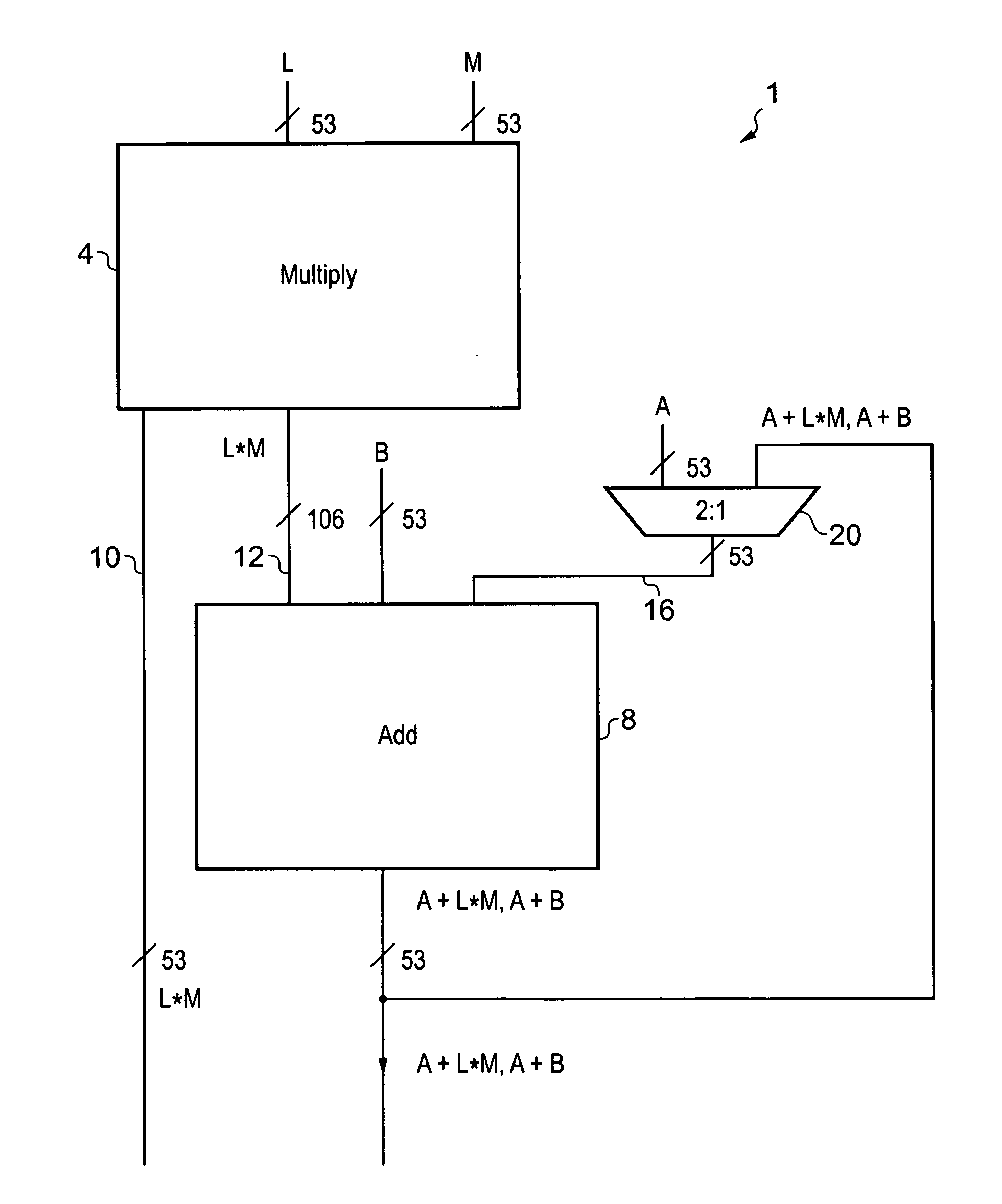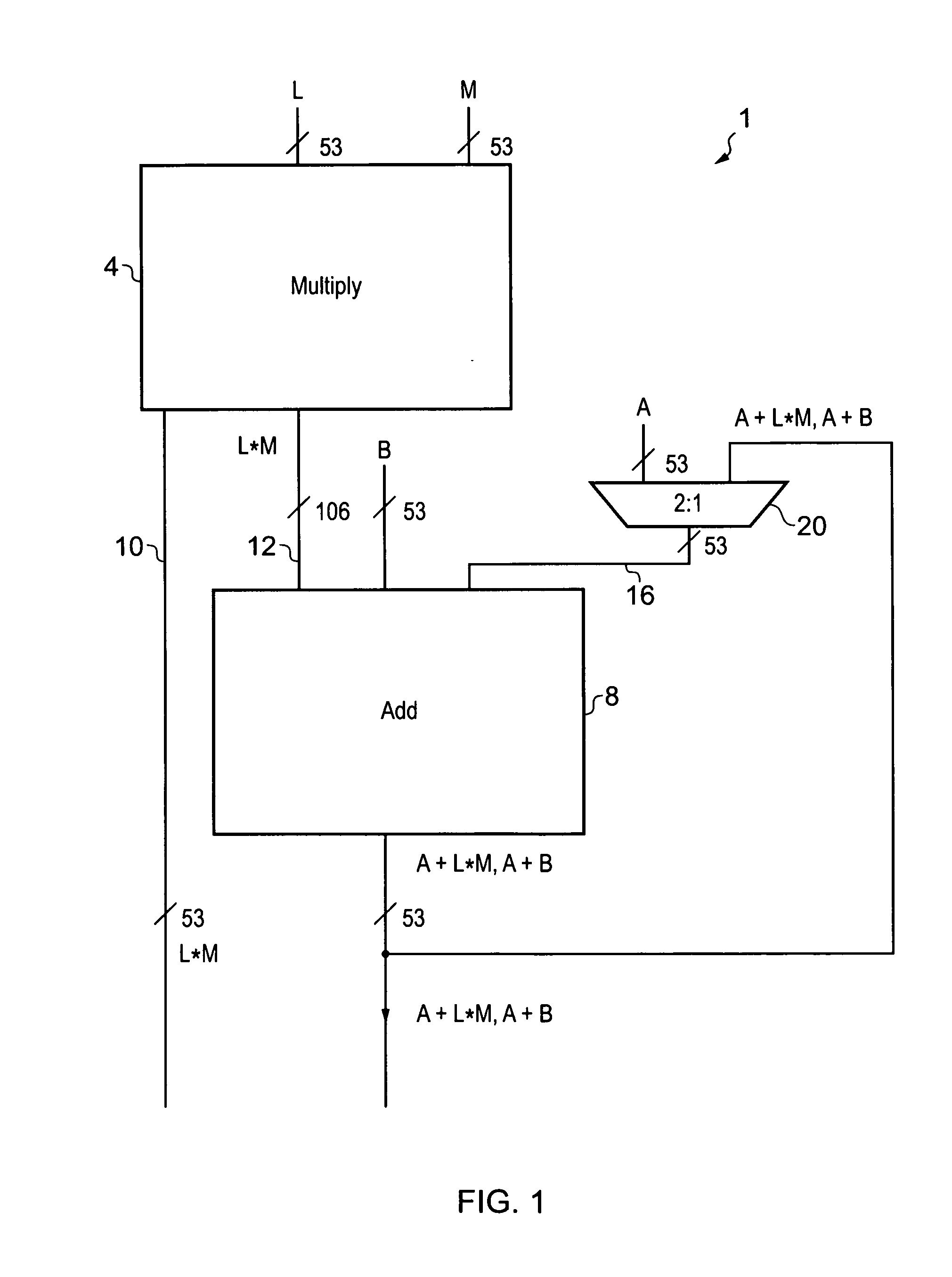Apparatus and method for performing floating point addition
a floating point addition and apparatus technology, applied in the field of apparatus and methods for performing floating point addition, can solve the problems of fma unit costly provision of such a dedicated unit, and typically taking longer to perform a standard multiplication operation, and achieves significant benefits, simple and small, simple and efficient
- Summary
- Abstract
- Description
- Claims
- Application Information
AI Technical Summary
Benefits of technology
Problems solved by technology
Method used
Image
Examples
example 1
[0103]LSA, classic far path (LSA is always a right shift case)[0104]1.011e4[0105]+1.101e2
Before we can add, we need to make the exponents the same, so the smaller number has to be right shifted two places.
1.011+0.011011.11001e4e4e4
[0106]Referring to FIG. 2, in the above example, the LZA output 180 would be ignored, the smaller operand would be right shifted using the right shift circuit 200, and the output from the add0 adder 260 would be selected as there is no overflow.
example 2
[0107]USA right shift, classic far path[0108]1.011e4[0109]1.001e2
Before we can subtract, we need to make the exponents the same, so the smaller number has to be right shifted two places by the right shift circuit 200.
1.011-0.011011.00011e4e4e4
[0110]The way subtractions are done in two's complement arithmetic is to invert the subtrahend and add it and one to the minuend (minuend−subtrahend=difference). We also left shift subtractions by one bit position and decrement the exponent so that the exponents work out (it's a subtraction, so the exponent might be one less than what we started with, but it's not going to get bigger). We let add0 handle the case where the exponent gets smaller, and add1 handle the case where the difference “overflows” to the original exponent). Referring to FIG. 2, the above can in one embodiment be achieved by adding logic to the inverter 165 in stage E2 to invert the subtrahend, adding logic to both multiplexers 205, 210 in stage E3 to left shift both signif...
example 3
[0113]USA with identical exponents, left shift required, classic near path[0114]1.110 e4[0115]−1.100 e4
[0116]Converting to two's complement addition, this becomes:
1.110+0.011+10.010e4e4e4
[0117]The result is not a normal number (normal floating point numbers must be of the form 1.xxx times some exponent). So what we do is use the LZA output 180 to tell us how much to left shift both operands, and then use the left shift circuits 190, 195 to perform the required left shift. In this case the predicted LZA is 3, so the addition becomes:
0.000+1.111+110.000e1e1e1(wefillinonesasweleftshiftthesubtrahend)
[0118]The carry out means that the correct answer is from the overflow adder 250, which has an exponent that is one higher, i.e.:
1.000 e2
PUM
 Login to View More
Login to View More Abstract
Description
Claims
Application Information
 Login to View More
Login to View More - R&D
- Intellectual Property
- Life Sciences
- Materials
- Tech Scout
- Unparalleled Data Quality
- Higher Quality Content
- 60% Fewer Hallucinations
Browse by: Latest US Patents, China's latest patents, Technical Efficacy Thesaurus, Application Domain, Technology Topic, Popular Technical Reports.
© 2025 PatSnap. All rights reserved.Legal|Privacy policy|Modern Slavery Act Transparency Statement|Sitemap|About US| Contact US: help@patsnap.com



